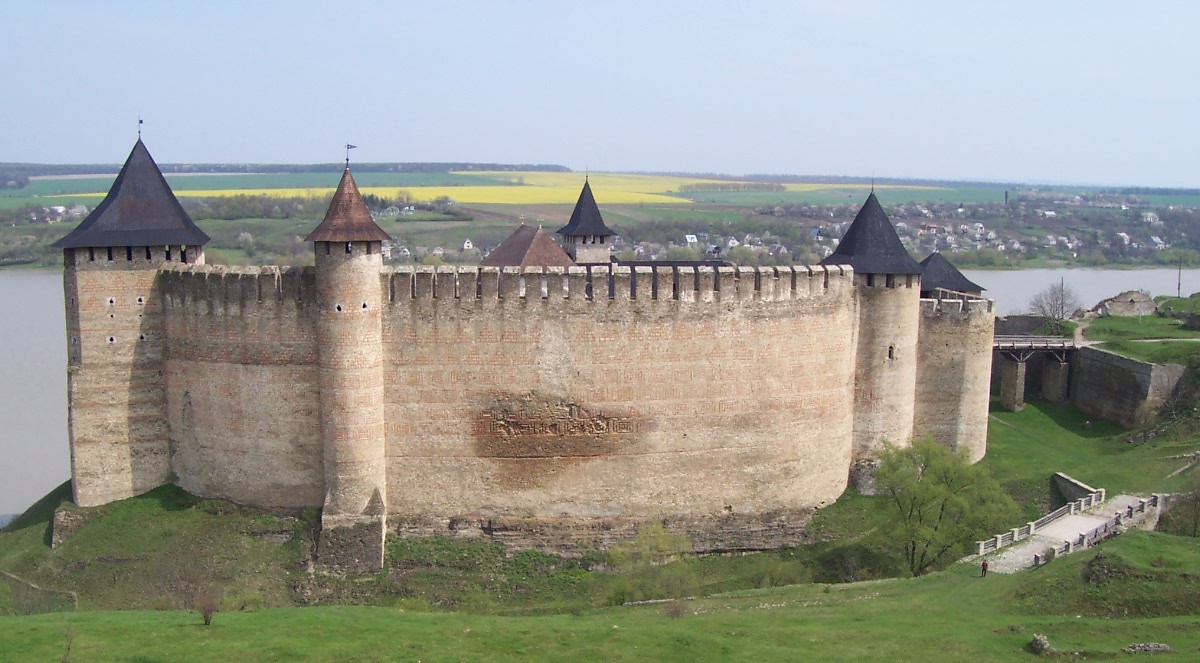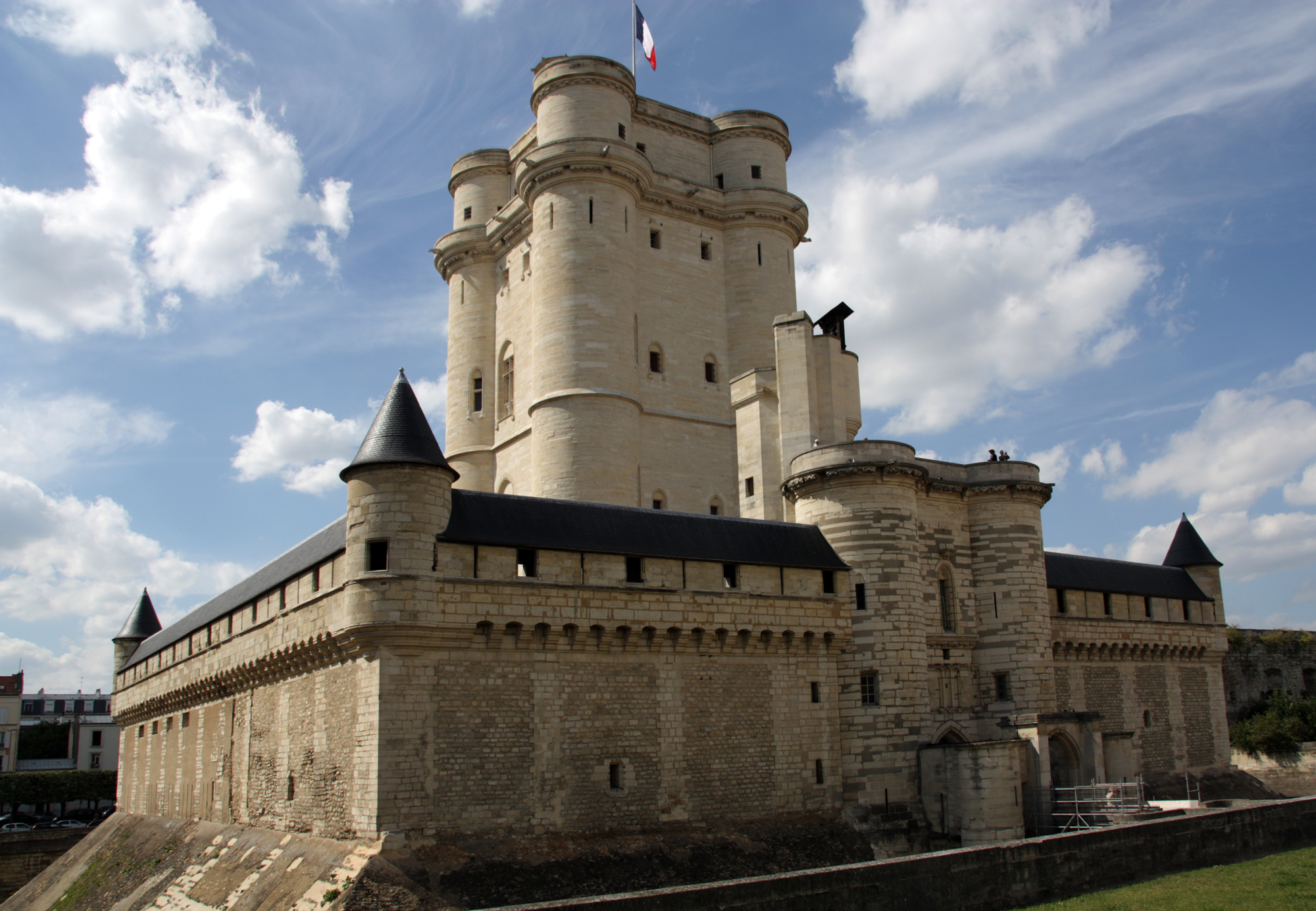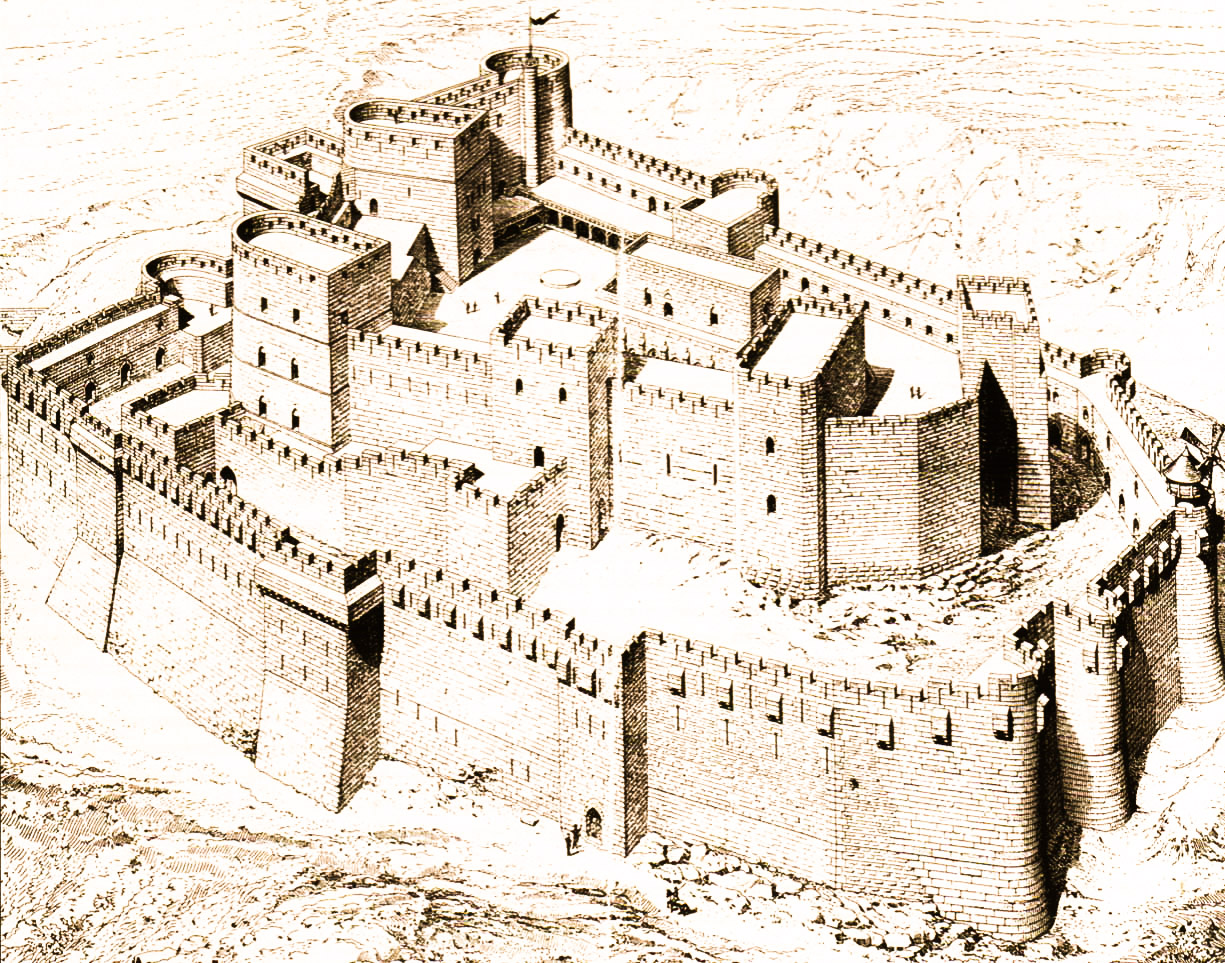Enceinte on:
[Wikipedia]
[Google]
[Amazon]


 Enceinte (from
Enceinte (from


 Enceinte (from
Enceinte (from Latin
Latin (, or , ) is a classical language belonging to the Italic branch of the Indo-European languages. Latin was originally a dialect spoken in the lower Tiber area (then known as Latium) around present-day Rome, but through the power of the ...
incinctus: girdled, surrounded) is a French term that refers to the "main defensive enclosure of a fortification". For a castle, this is the main defensive line of wall tower
A fortified tower (also defensive tower or castle tower or, in context, just tower) is one of the defensive structures used in fortifications, such as castles, along with curtain walls. Castle towers can have a variety of different shapes and ful ...
s and curtain walls enclosing the position. For a settlement, it would refer to the main town wall with its associated gatehouse
A gatehouse is a type of fortified gateway, an entry control point building, enclosing or accompanying a gateway for a town, religious house, castle, manor house, or other fortification building of importance. Gatehouses are typically the mos ...
s, towers, and walls.
According to the 1911 ''Encyclopædia Britannica'', the term was strictly applied to the continuous line of bastion
A bastion or bulwark is a structure projecting outward from the curtain wall of a fortification, most commonly angular in shape and positioned at the corners of the fort. The fully developed bastion consists of two faces and two flanks, with fi ...
s and curtain walls forming "the body of the place", this last expression being often used as synonymous with ''enceinte''. However, the outwork
An outwork is a minor fortification built or established outside the principal fortification limits, detached or semidetached. Outworks such as ravelins, lunettes (demilunes), flèches and caponiers to shield bastions and fortification curtains ...
s or defensive wall
A defensive wall is a fortification usually used to protect a city, town or other settlement from potential aggressors. The walls can range from simple palisades or earthworks to extensive military fortifications with towers, bastions and gates ...
close to the enceinte were not considered as forming part of it. In early 20th-century fortification, the enceinte was usually simply the ''innermost'' continuous line of fortifications.
In architecture
Architecture is the art and technique of designing and building, as distinguished from the skills associated with construction. It is both the process and the product of sketching, conceiving, planning, designing, and constructing building ...
, generally, an enceinte is the close
Close may refer to:
Music
* ''Close'' (Kim Wilde album), 1988
* ''Close'' (Marvin Sapp album), 2017
* ''Close'' (Sean Bonniwell album), 1969
* "Close" (Sub Focus song), 2014
* "Close" (Nick Jonas song), 2016
* "Close" (Rae Sremmurd song), 201 ...
or precinct of a cathedral
A cathedral is a church that contains the '' cathedra'' () of a bishop, thus serving as the central church of a diocese, conference, or episcopate. Churches with the function of "cathedral" are usually specific to those Christian denomination ...
, abbey
An abbey is a type of monastery used by members of a religious order under the governance of an abbot or abbess. Abbeys provide a complex of buildings and land for religious activities, work, and housing of Christian monks and nuns.
The conce ...
, castle
A castle is a type of fortified structure built during the Middle Ages predominantly by the nobility or royalty and by military orders. Scholars debate the scope of the word ''castle'', but usually consider it to be the private fortified r ...
, etc.
This definition of the term differs from the more common use of enceinte as a French adjective, which means "pregnant".
Features
The enceinte may be laid out as a freestanding structure or combined with buildings adjoining the outer walls. The enceinte not only provided passive protection for the areas behind it, but was usually an important component of the defence with itswall walk
A ''chemin de ronde'' ( French, "round path"' or "patrol path"; ), also called an allure, alure or, more prosaically, a wall-walk, is a raised protected walkway behind a castle battlement.
In early fortifications, high castle walls were difficu ...
s (often surmounted by battlements
A battlement in defensive architecture, such as that of city walls or castles, comprises a parapet (i.e., a defensive low wall between chest-height and head-height), in which gaps or indentations, which are often rectangular, occur at interva ...
), embrasure
An embrasure (or crenel or crenelle; sometimes called gunhole in the domain of gunpowder-era architecture) is the opening in a battlement between two raised solid portions (merlons). Alternatively, an embrasure can be a space hollowed out ...
s and covered firing positions.
The outline of the enceinte, with its fortified tower
A fortified tower (also defensive tower or castle tower or, in context, just tower) is one of the defensive structures used in fortifications, such as castles, along with curtain walls. Castle towers can have a variety of different shapes and ful ...
s and domestic buildings, shaped the silhouette of a castle. The ground plan of an enceinte is affected by the terrain. The enceintes of hill castle
A hill castle or mountain castle is a castle built on a natural feature that stands above the surrounding terrain. It is a term derived from the German ''Höhenburg'' used in categorising castle sites by their topographical location. Hill castles ...
s often have an irregular polygon
In geometry, a polygon () is a plane figure that is described by a finite number of straight line segments connected to form a closed ''polygonal chain'' (or ''polygonal circuit''). The bounded plane region, the bounding circuit, or the two toge ...
al shape dictated by the topography, whilst lowland castle
The term lowland castle or plains castle (german: Niederungsburg, Flachlandburg, Tieflandburg) describes a type of castle that is situated on a lowland, plain or valley floor, as opposed to one built on higher ground such as a hill spur. The cl ...
s more frequently have a regular rectangular shape, as exemplified by quadrangular castle
A quadrangular castle or courtyard castle is a type of castle characterised by ranges of buildings which are integral with the curtain walls, enclosing a central ward or quadrangle, and typically with angle towers. There is no keep and frequent ...
s.
From the 12th century onwards, an additional enclosure called a was often built in front of the enceinte of many European castles. This afforded an additional layer of defense as it formed a killing ground in front of the main defensive wall. Sometimes—depending on the size and type of the surrounding fortifications—several wall systems were built (e.g. as Zwingers) that could also be used to keep dogs, wild boar or bears, or even cattle in times of need. During the Baroque era
The Baroque (, ; ) is a style of architecture, music, dance, painting, sculpture, poetry, and other arts that flourished in Europe from the early 17th century until the 1750s. In the territories of the Spanish and Portuguese empires including th ...
it was not uncommon for these enclosures to be turned into pleasure garden
A pleasure garden is a park or garden that is open to the public for recreation and entertainment. Pleasure gardens differ from other public gardens by serving as venues for entertainment, variously featuring such attractions as concert halls, ...
s as for example in the Zwinger at Dresden.
Notes
References
* * Attribution: * Castle architecture {{Architecture-stub